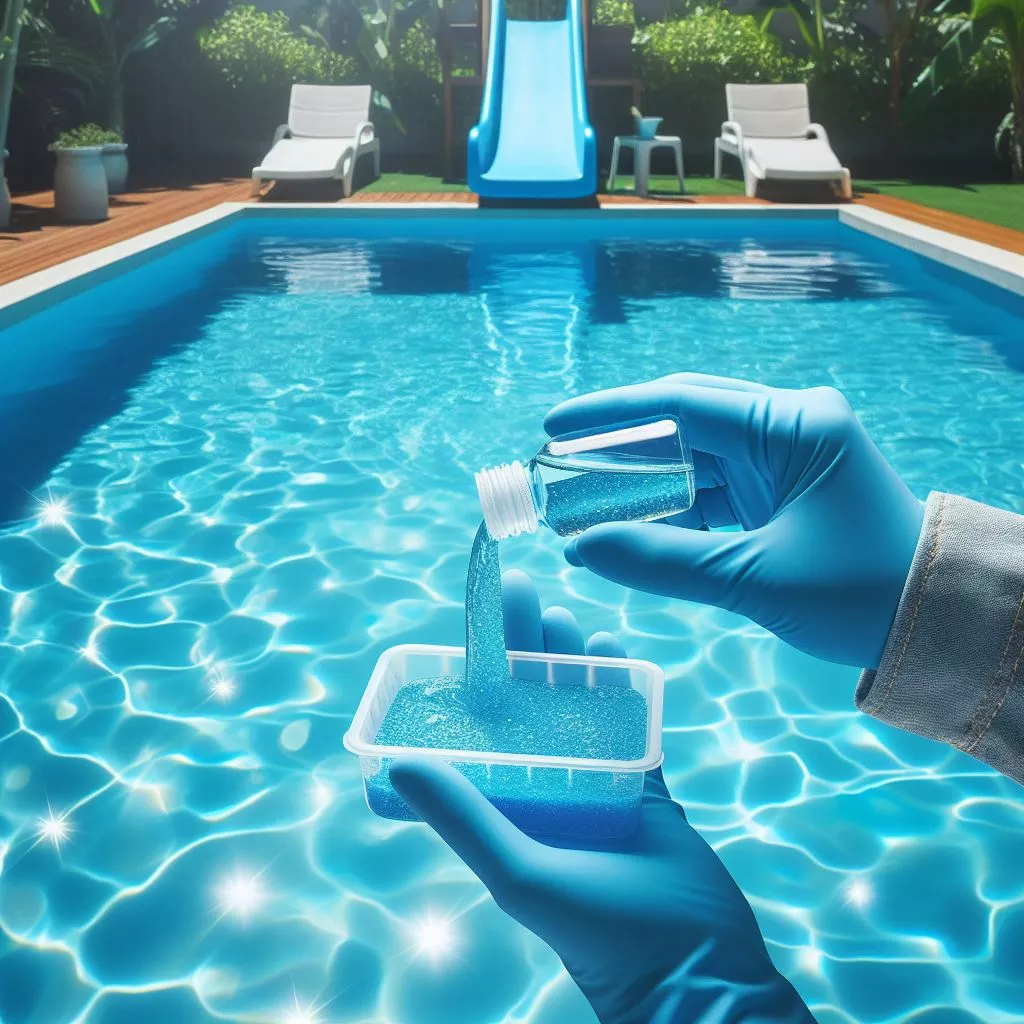Maintaining a sparkling, clean pool is a top priority for any pool owner. Among the various chemicals employed to keep pools in pristine condition, flocculants play a crucial role by clumping together particles that cloud the water, allowing them to sink to the bottom for easy removal. However, like all aspects of pool maintenance, balance is key. This article explores the effects of using too much flocculant in your pool and offers guidance on managing and preventing such scenarios.

Understanding Flocculants in Pool Maintenance
Flocculants, or floc as they are sometimes called, are chemical agents that treat cloudy pool water by aggregating suspended particles into larger clumps. These clumps then sink to the bottom of the pool, making it easier to vacuum them up. While flocculants are effective in clarifying pool water, their overuse can lead to a range of issues that can affect both the pool’s condition and the safety of its users.
The Consequences of Excessive Flocculant Use
1. Difficulty in Removal: Too much flocculant can create dense, heavy clumps of debris that are hard to vacuum, potentially leading to clogged pool filters or damage to the pool’s vacuum system.
2. Water Chemistry Imbalance: Flocculants can affect the balance of your pool’s chemistry, particularly pH and alkalinity levels. An imbalance in water chemistry can lead to uncomfortable swimming conditions and may harm pool components.
3. Cloudy Water: Ironically, an overabundance of flocculant can leave your pool water cloudier than before. This happens when the flocculant binds too many particles together, making them difficult to remove completely.
4. Increased Maintenance Costs: The misuse of flocculants can lead to increased maintenance efforts and costs, including more frequent filter replacements, additional chemicals to rebalance water chemistry, and potential repairs to cleaning equipment.
Addressing Overuse of Flocculant
1. Manual Removal: If excessive flocculant use results in large debris clumps, manual removal may be necessary. This involves using a pool vacuum set on waste mode to avoid sending the debris through the filter system.
2. Filter Cleaning: Clean or backwash your pool filter thoroughly to remove any flocculant residue that may contribute to filtration issues or water flow restrictions.
3. Water Chemistry Adjustment: Test your pool water and adjust the chemistry as needed. This may involve balancing pH, alkalinity, and chlorine levels to ensure a safe and pleasant swimming environment.
4. Partial Water Replacement: In cases of severe overuse, partially draining and refilling your pool may be necessary to dilute the concentration of flocculant and other chemicals in the water.
Preventing Flocculant Overuse
1. Follow Instructions Carefully: Always read and follow the manufacturer’s instructions regarding flocculant dosage based on your pool’s volume.
2. Regular Water Testing: Conduct regular water tests to understand your pool’s needs better and avoid unnecessary chemical additions.
3. Consider Alternative Treatments: If your pool frequently requires flocculation, consider other treatments or adjustments to your maintenance routine that might address the underlying causes of cloudy water.
4. Educate Yourself and Others: Understanding the role and proper use of flocculants, as well as other pool chemicals, is crucial. Education can prevent mistakes that lead to overuse and its associated problems.
Conclusion
The judicious use of flocculant can be a boon for pool owners, transforming cloudy water into a crystal-clear swimming oasis. However, the adage “more is not always better” certainly applies here. Recognizing the signs of flocculant overuse and understanding how to address and prevent such situations is essential for maintaining a healthy, inviting pool. By following the guidelines outlined in this article, pool owners can ensure that their pools remain balanced, clear, and enjoyable for all swimmers.
